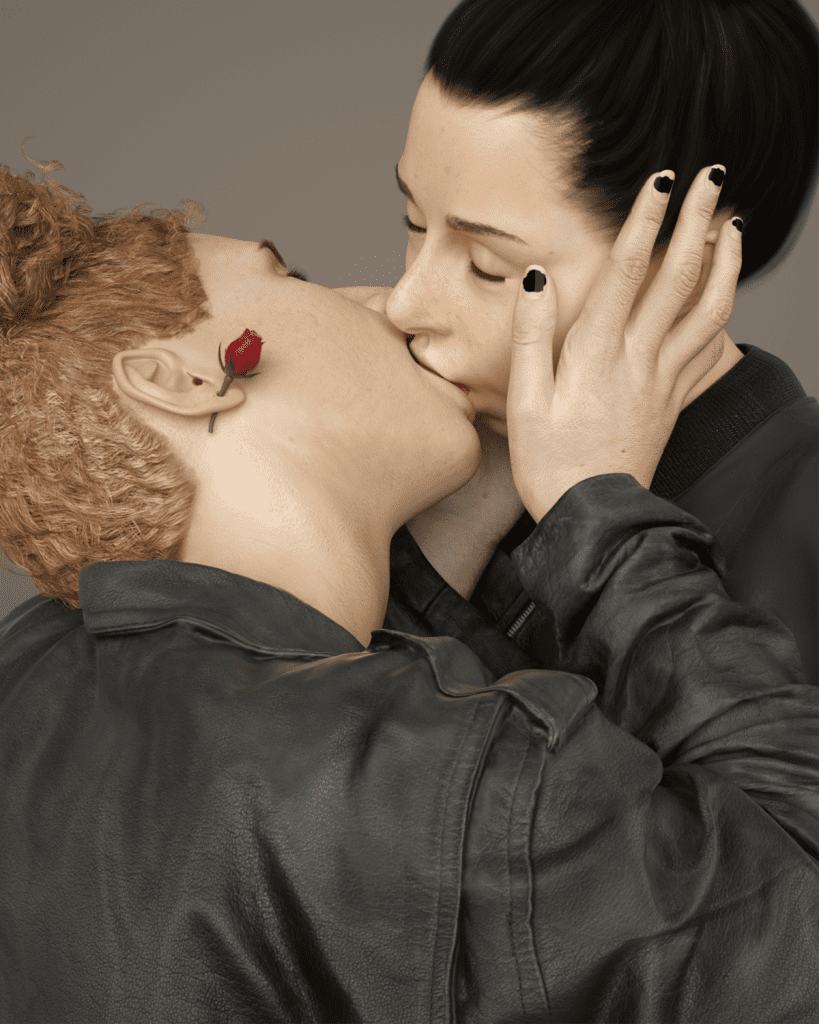Many artists selected for the pride curation speak about how their relationship with gender exists entirely without regard to the binary system, so instead they focus on a more existential relationship with their body and its limitations. Most of those who don’t belong to the broader trans community take for granted the relationship they have with their bodies. It takes a high degree of self-awareness to authentically reflect on one’s gender identity, and it takes an extraordinary amount of bravery to challenge that norm and exercise authority over one’s gender expression. It’s one of the things that makes the community so special: queer people subvert the cultural standard of what is perceived as good, right, and beautiful, and supplement it with something that is entirely their own.
Zach Krevitt describes his experience with the puppy play community as particularly liberating to this effect. He talks about “queering” the body in a more universal sense of the word, dissolving the limits of his physical form, and, in turn, the barriers between people, to uncover a broader feeling of love and connection. “Superpositions of Truth” takes what he learned from documenting the puppy play community and explores how those core concepts interact with the lenses of observation. Many who subvert heteronormativity are more acutely aware of attracting attention everywhere they go. At times liberating and revelatory, at other times scary and dangerous, being “visibly queer” makes navigating society exceedingly complex. Inspired by the legendary club kids from the ‘90s, Zach uses a ghillie suit and CV dazzle makeup to engage the dichotomy of standing out with pride and blending in for safety. Those not belonging to the queer community often incorrectly perceive makeup and clothing as a superficial or surface-deep means of expression, but Zach’s body of work demonstrates how they allow queer people to reflect and explore a deeper sense of truth.
Internet culture adds another layer of complexity to the journey of knowing one’s self, and for many who are unable to safely experiment in the real world, it provides an effective avenue of exploration. For Kate the Cursed, being able to create an in-game avatar helped catalyze her journey as a trans woman. The gaming community can be an especially volatile and unwelcoming place to queer people, but it’s also a common means of escape for many who struggle to exist happily in their bodies. As Kate puts it, “Digital avatars can help us to understand just who we are and where we’re going.” Following in the footsteps of Jamie Fay Fenton, a trans artist credited with the invention of glitch art, Kate uses the oscilloscope to create mesmerizing videos that prompt viewers to pause and meditate on the nature of identity. Especially as trans people around the world continue to face discrimination, Kate is proud to be included among those gaining the recognition and visibility they deserve as leaders in the artform.




